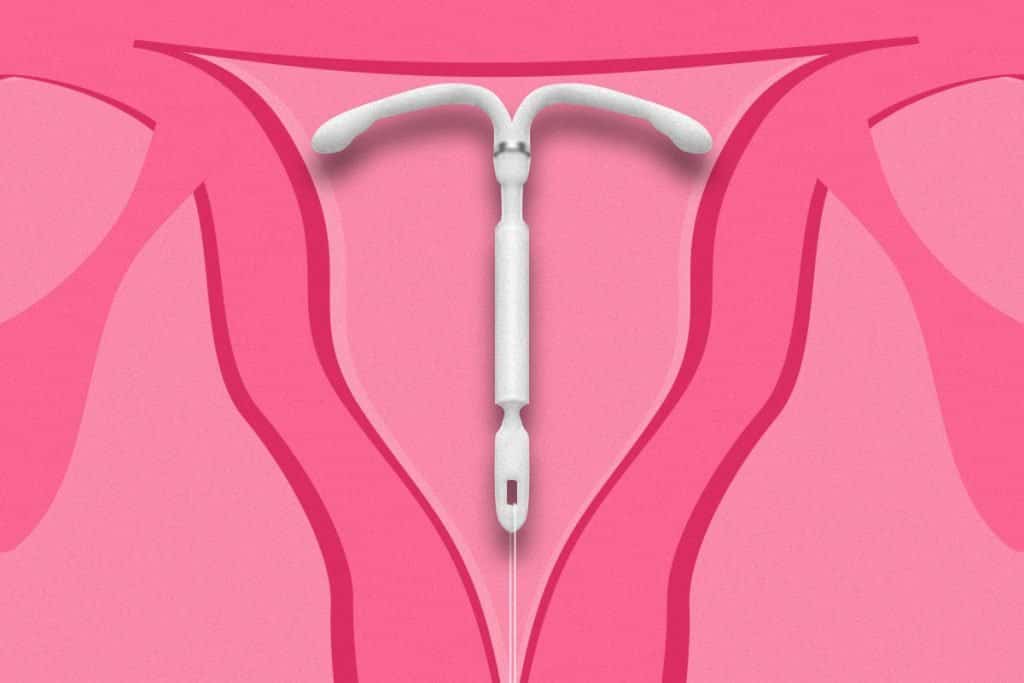The Kyleena IUD is a hormonal contraceptive method that recently arrived in Brazil. Among its advantages, it has a lower amount of hormones.
Recently, a new hormonal contraceptive method arrived in Brazil, the Kyleena IUD, manufactured by the pharmaceutical company Bayer. In short, it is a T-shaped hormonal IUD. The correct pronunciation is cailina. Furthermore, it releases a hormone called levonorgestrel, which is a type of progesterone.
Currently, in Brazil there are only two types of hormonal IUDs, the Mirena, and now the Kyleena. Both are valid for 5 years. However, the Kyleena was designed in a small size, about 25% smaller than the Mirena. This way, it is better suited to women who have a narrower cervical canal, making insertion easier.
As in cases of women who have not yet had children or teenagers whose uterus is small, for example. Another advantage of the new IUD is that it is a low-dose hormonal contraceptive. Therefore, it causes fewer side effects, such as dizziness, weight gain, decreased libido or mood changes.
Therefore, it is an ideal method for those women who are looking for an effective, safe, long-lasting contraceptive with a low amount of hormones.
Kyleena IUD: what is it
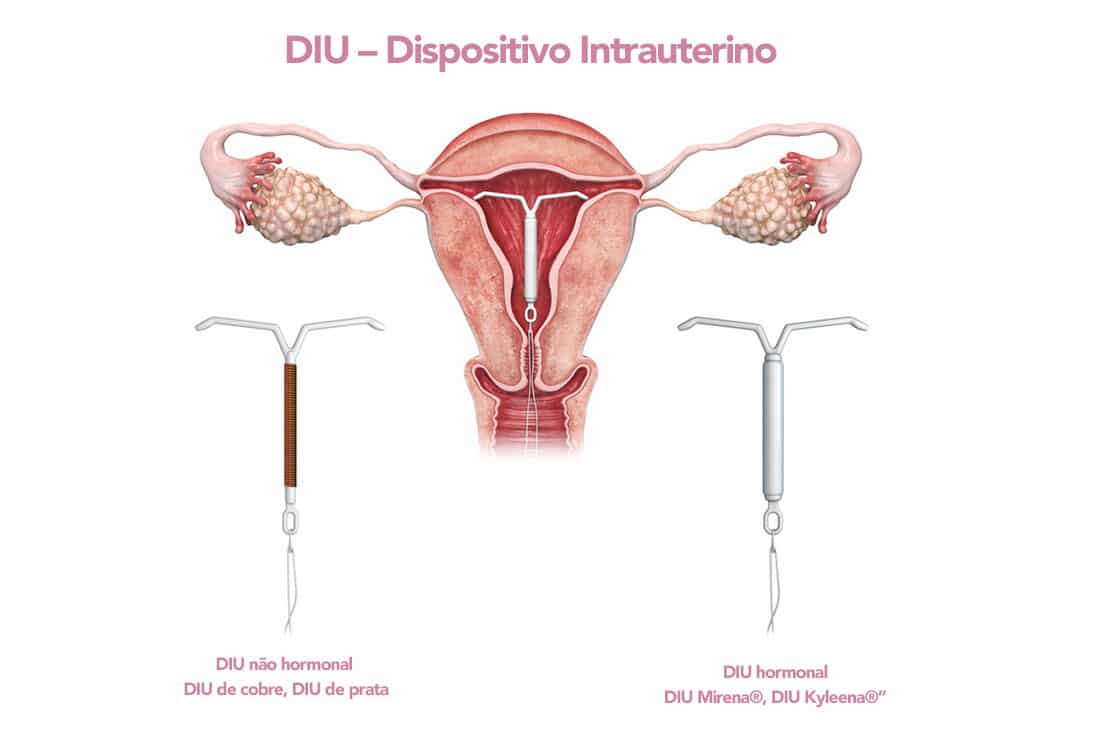
It is a contraceptive method that is inserted inside the uterus, in the endometrium, which can be inserted in offices, surgical centers under sedation or immediately after birth (vaginal or cesarean section). Furthermore, IUD stands for intrauterine device, also called intrauterine system (IUS).
Finally, the Kyleena IUD is T-shaped and releases a small amount of progesterone continuously. Furthermore, its main characteristics are:
- Releases a smaller amount of hormone compared to other IUDs, causing fewer side effects.
- It is smaller in size, which makes insertion more comfortable. Furthermore, it is ideal for women with a small uterus.
- Its applicator is thinner, providing greater comfort and convenience during insertion.
- It also has a silver ring, which allows it to be seen more easily during the ultrasound exam.
How it works
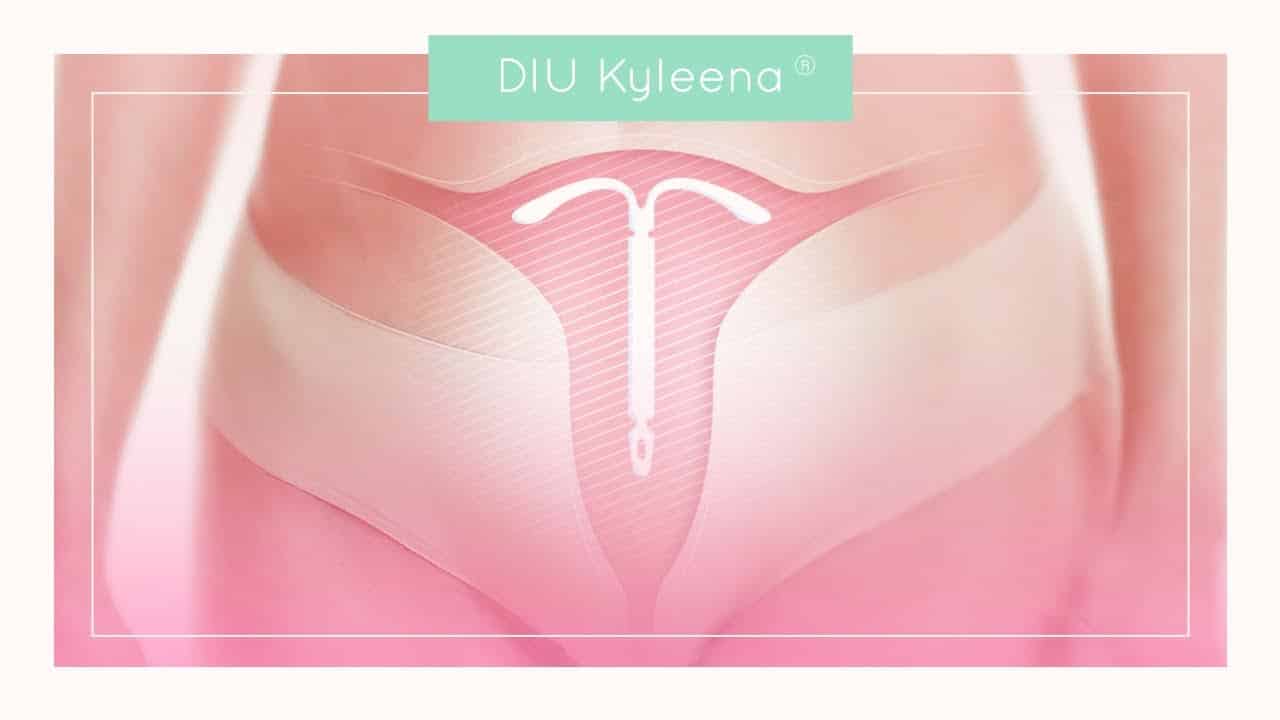
In short, the Kyleena IUD works by releasing small amounts of the hormone levonorgestrel daily into the uterus. In this way, the method acts:
- Increasing the thickening of mucus present in the cervix. Consequently, this prevents sperm from entering the uterus.
- It causes atrophy of the endometrium, which makes it difficult for the embryo to implant.
- It causes an inflammatory process in the endometrium, similar to what happens with the copper IUD.
Finally, the Kyleena IUD does not prevent ovulation, in the same way that the Mirena does not. Therefore, its effectiveness lies in preventing sperm from entering the uterus.
Advantages and disadvantages of the method
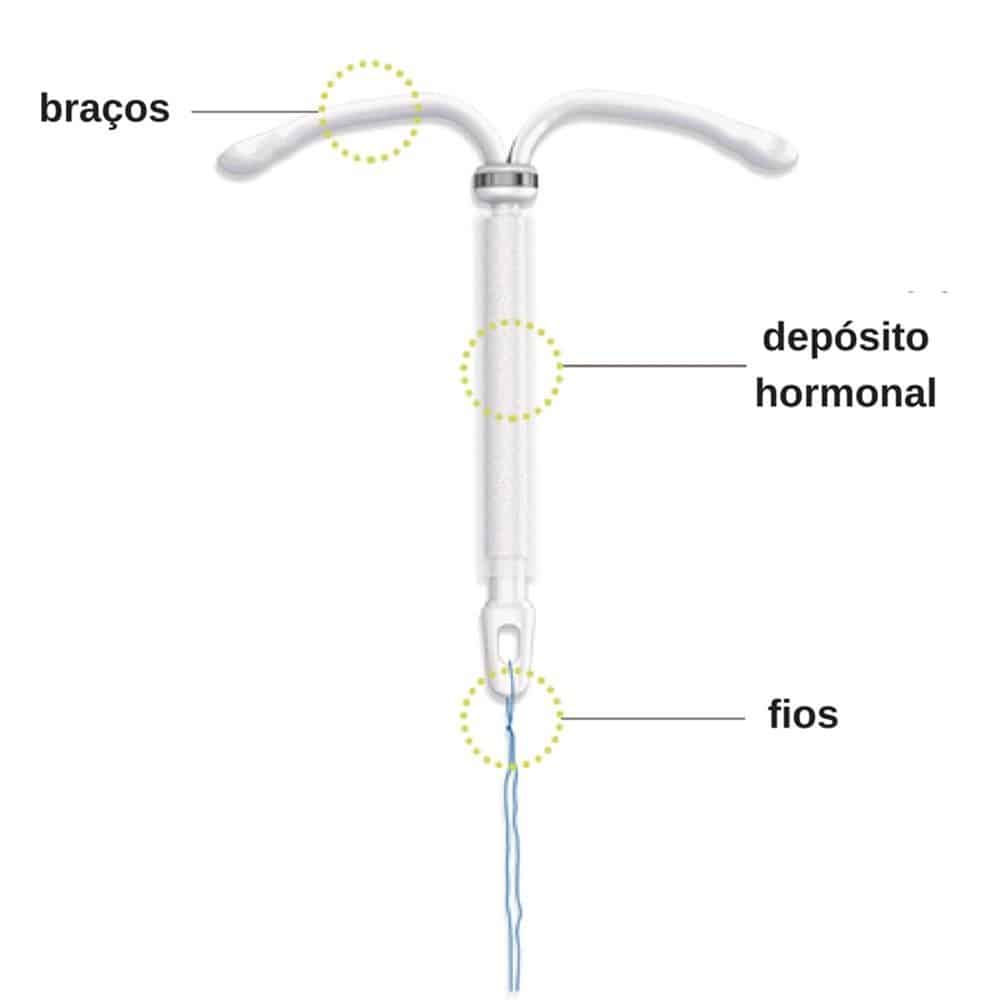
Among the main advantages of the Kyleena IUD as a contraceptive method are:
- Due to its small size, it is ideal for use by women with small uteruses and teenagers.
- In some women, the method stops menstruation;
- Relieves menstrual cramps.
- It has one of the highest efficacy rates among all contraceptives.
- After being inserted into the uterus, it is valid for 5 years.
- The woman becomes fertile again as soon as the IUD is removed.
- Can be used during breastfeeding.
- Recommended for women at high risk for thrombosis, which is not the case with contraceptive pills.
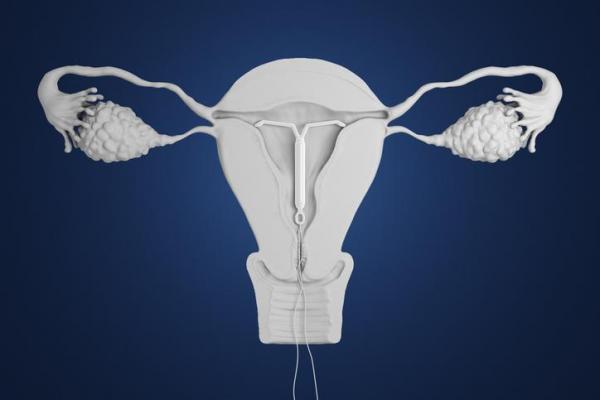
On the other hand, just like any contraceptive method, the Kyleena IUD also has some disadvantages. Such as:
- Just like any other type of IUD, the Kyleena can also cause some discomfort during insertion or removal from the uterus.
- It is not available in the public health network.
- Unpredictable bleeding may occur, especially during the first 6 months after being placed.
- Cause headaches or acne in some women, due to the hormone released.
- It can perforate the uterus, however, this is a very rare thing to happen.
- In some cases, the IUD may become dislodged or expelled from the uterus. Therefore, you need medical monitoring.
- It is a contraceptive method. But, it does not protect against sexually transmitted diseases (STDs). For example, HPV, Syphilis or HIV (AIDS).

Finally, the method is contraindicated in cases of:
- Pregnancy
- Malformations in the uterus. Therefore, it is important to have an ultrasound scan before inserting it.
- Acute infection in the uterus or tubes.
- Vaginal discharge on the day of IUD insertion.
- Vaginal bleeding of unknown cause.
- Postpartum infection or infected abortion within the last 3 months.
- Malignant tumor in the cervix or uterus.
- Progesterone-dependent tumors.
- Acute liver diseases or cases of liver tumors.
Differences between the Kyleena and Mirena IUD
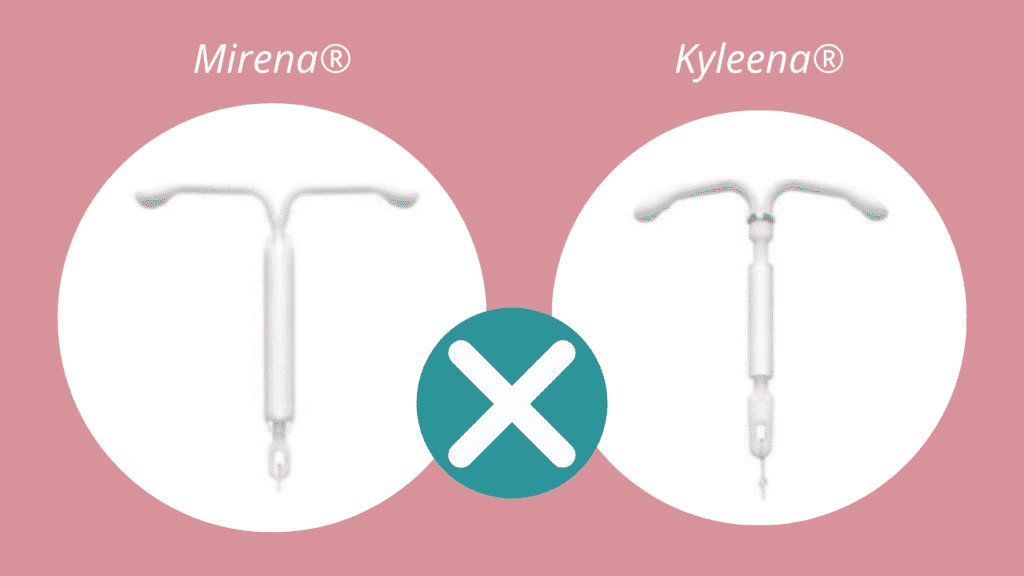
In short, both the Kyleena IUD and the Mirena are hormonal intrauterine devices. The function of which is to make the environment hostile to fertilization, thus preventing pregnancy. Additionally, they both slowly release the same hormone (levonorgestrel) into the uterus over time.
According to experts, only the traditional Mirena is indicated to treat women with heavy menstrual bleeding or for hormone replacement. Furthermore, the differences between Kyleena and Mirena are in the size and amount of hormone released.
While the Mirena measures 32 mm long, 32 mm wide and 1.9 mm thick. The Kyleena measures 30mm long, 28mm wide and 1.55mm thick. Therefore, Kyleena is more suitable for women who have a small uterus.
Because, when using a larger IUD, a woman may experience discomfort and cramps. Likewise, when the IUD is large, some rod can penetrate the myometrium, partially perforating the uterus.
Another difference in IUDs is the amount of hormone inside each one. Mirena has 52 mg of hormone stored inside. The daily release rate is 20 mcg per day. Kyleena has only 19.5 mg of hormone stored, releasing 17.5 mcg in the first 24 days after insertion. However, after 60 days, the rate drops to 15.3 mcg. However, the fact that it has a lower hormone release rate does not reduce its effectiveness as a contraceptive method.
Therefore, for women with greater sensitivity to progesterone, the Kyleena IUD is more suitable. Yes, the side effects are minor. Finally, the effectiveness of both contraceptives is very high, with a failure rate of 0.2% per year.
Step by step for inserting the Kyleena IUD


To better understand how the Kyleena IUD is inserted step by step, you first need to have a gynecological consultation for an evaluation and contraception class. Therefore, the gynecologist will perform a transvaginal ultrasound, collect a pap smear, as well as other tests.
Then, with the results of the exams, an appointment is made for the insertion of the IUD. Therefore, the most appropriate period to insert or remove the IUD is during the first seven days of the menstrual cycle. Therefore, the ideal is when the woman is menstruating. This is when the uterus is most open, which makes insertion easier.

Additionally, a vaginal numbing cream may be used prior to insertion to prevent the patient from experiencing pain or discomfort. However, the procedure can also be done in the operating room with sedation. Which lasts 5 minutes.
Furthermore, an ultrasound is done immediately after inserting the contraceptive to see if it is positioned in the right place. Typically, the gynecologist cuts the IUD thread at a distance of 1.5 cm from the cervix. However, if it is a place that does not have ultrasound, the doctor needs to check the size of the wire to confirm that the distance remains the same.
Finally, after the next menstrual period, another ultrasound must be performed to check whether the IUD has not dislodged. Well, it is after the first menstruation that the IUD usually moves out of place. This way, if it is not in the right place, the doctor can reposition it using forceps (hysteroscopy) or remove the IUD and insert another.
Questions about the method
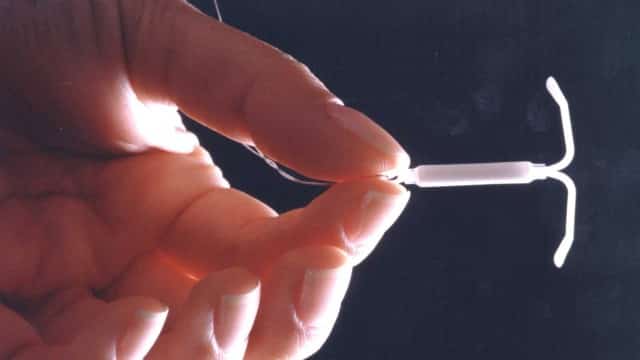
Does the Kyleena IUD change menstrual flow?
According to Dr. Paula Giani Fonseca, gynecologist and obstetrician at the Madrecenter Institute, in Brasília. The Kyleena IUD can reduce menstrual flow, making the cycle last fewer days and with less intensity. In addition to reducing colic. However, it does not cause menstruation to stop completely.
“The hormonal IUD is not a promise of absence of menstruation, it is a possibility. The lower the hormonal level, the lower the chance of the patient stopping menstruating”, explains Dr. Paula Giani.
Does the method bother you during sexual intercourse?
Normally, the IUD does not bother, however, it is possible for the partner to feel the tip of the thread that is in the cervix.
“When this happens and, if the woman wishes, it is possible to cut the thread or hide it in the cervix”, says the gynecologist.
What are the side effects caused by the Kyleena IUD?
Hormonal IUDs can cause headaches, breast pain, changes in libido, pimples, fluid retention or bleeding. Mainly, in the first few months after its insertion, which can reduce side effects after 4 to 6 months.
On the other hand, because Kyleena has a smaller amount of hormone, the effects may be milder compared to Mirena.
Hormone vs. hormone-free
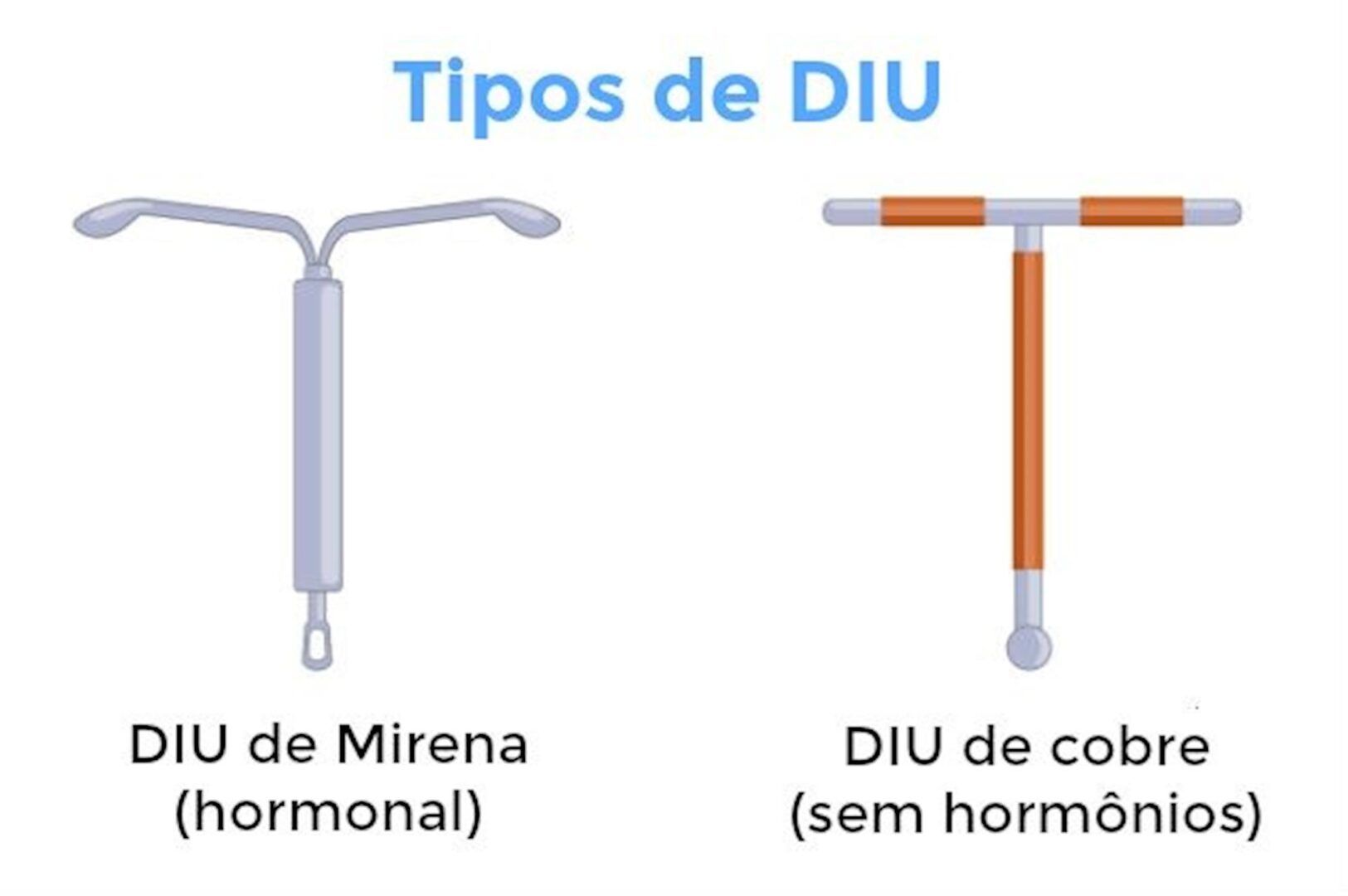
Finally, according to the gynecologist, Dr. Paula Giani Fonseca, before deciding on the model, you need to understand what your real expectations and needs are.
This way, you can choose between a hormonal IUD, which in addition to preventing pregnancy, also helps control bleeding. Or an IUD without hormones, such as copper or silver and copper, ideal for women who have contraindications to hormones.
Anyway, if you have any doubts, the ideal is that you look for a specialist to find out more about the benefits and disadvantages of each one.
So, if you liked this article, you will also like this one: Mirena IUD: what is it? Most common questions, advantages and disadvantages.
Bibliographical sources:
- http://solmedicamentosespeciais.com.br/ginecologia/diu-kyleena-diu-mirena/
- Insert provided by the manufacturer of the Intrauterine System (IUS) Kyleena;
- Evaluation of different medications for reducing pain during insertion of intrauterine devices: a systematic review and meta-analysis. https://pubmed.ncbi.nlm.nih.gov/30611553/;
- Clarification of the role of the IUS – LNG 13.5 mg Jaydess® and the IUS – LNG 19.5 mg Kyleena® as intrauterine contraceptive systems. https://pubmed.ncbi.nlm.nih.gov/28675069/;
- Levonorgestrel-releasing intrauterine systems as female contraceptives. https://pubmed.ncbi.nlm.nih.gov/29637798/.

Sign up for our newsletter and stay up to date with exclusive news
that can transform your routine!
Warning: Undefined array key "title" in /home/storelat/public_html/wp-content/plugins/link-whisper-premium/templates/frontend/related-posts.php on line 12
Warning: Undefined array key "title_tag" in /home/storelat/public_html/wp-content/plugins/link-whisper-premium/templates/frontend/related-posts.php on line 13

